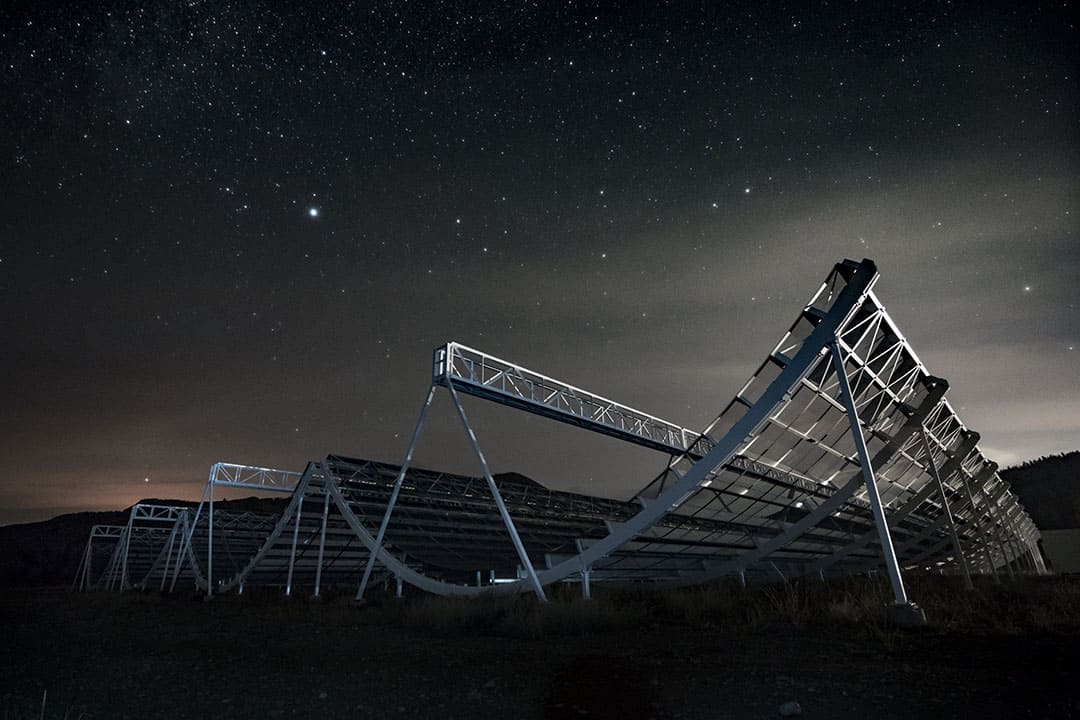September 7, 2017 marked an important day for an all-Canadian collaboration of astronomers and astrophysicists from the University of Toronto, the University of British Columbia, McGill University, and the National Research Council of Canada. After many years of development, the Canadian Hydrogen Intensity Mapping Experiment (CHIME) began collecting data in an effort to create the largest map of the universe to date.
Located at the Dominion Radio Astrophysical Observatory just outside of Penticton, British Columbia, CHIME is the largest radio telescope in Canada. The instrument is made up of four 200-by-100-metre half-cylinders and has the computing power to process seven quadrillion computer operations every second.
According to U of T’s Dunlap Institute for Astronomy and Astrophysics, one of the collaborators on the project, the result of CHIME will be a three-dimensional map of radio waves covering half the night sky and extending billions of light years deep.
In attendance at a ceremony marking CHIME’s official launch was Minister of Science Kirsty Duncan, who installed the final piece of the telescope before it began operations. Also present was Dr. Keith Vanderlinde, a professor at the Dunlap Institute and a member of the CHIME collaboration.
With the data collected from CHIME, astronomers hope to answer a number of questions about the nature and evolution of the universe. CHIME will allow astronomers to learn more about the universe’s expansion history by shedding light on a period of time when a mysterious force known as dark energy — one of the main drivers behind the expansion of the universe — first began to play a role in the universe’s evolution.
While astronomers do know that the expansion of the universe is speeding up, many questions remain about the rate at which this is occurring and the ultimate fate that will befall the universe.
In addition to CHIME’s main scientific goal of mapping the universe and studying the universe’s expansion, the telescope will study other enigmatic radio phenomena in the sky. Back-end instrumentation installed on the telescope will allow astronomers to monitor pulsars, which are rapidly rotating remnants of long-dead giant stars that emit energy at radio wavelengths. They could provide future observational evidence of gravitational waves.
CHIME will also aid in the detection of Fast Radio Bursts (FRBs), which are short-lived but extremely powerful pulses of radio waves whose origins remain a mystery. These additional scientific goals are in collaboration with the National Radio Astronomy Observatory and scientists at the Perimeter Institute in Waterloo, Ontario.
After nearly six years of construction and $16 million invested into the project, collaborating astronomers are excited about the prospects for future scientific breakthroughs that CHIME holds.
“[CHIME] lets us do things that were previously impossible,” said Vanderlinde in a joint press release issued by the telescope’s primary collaborators. “We can look in many directions at once, run several experiments in parallel, and leverage the power of this new instrument in unprecedented ways.”


